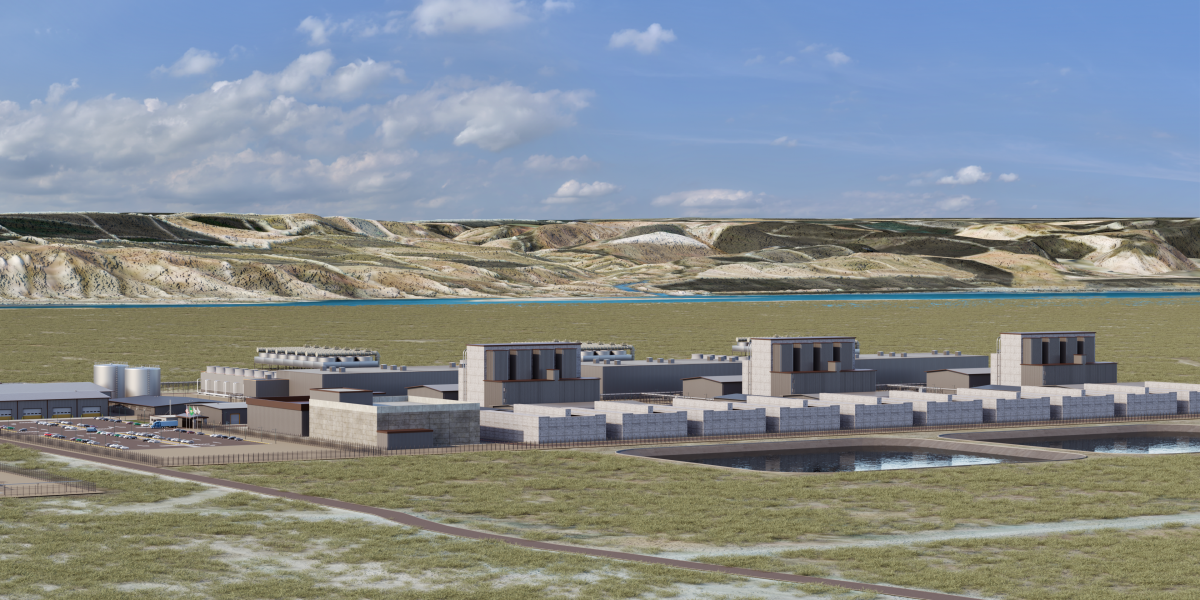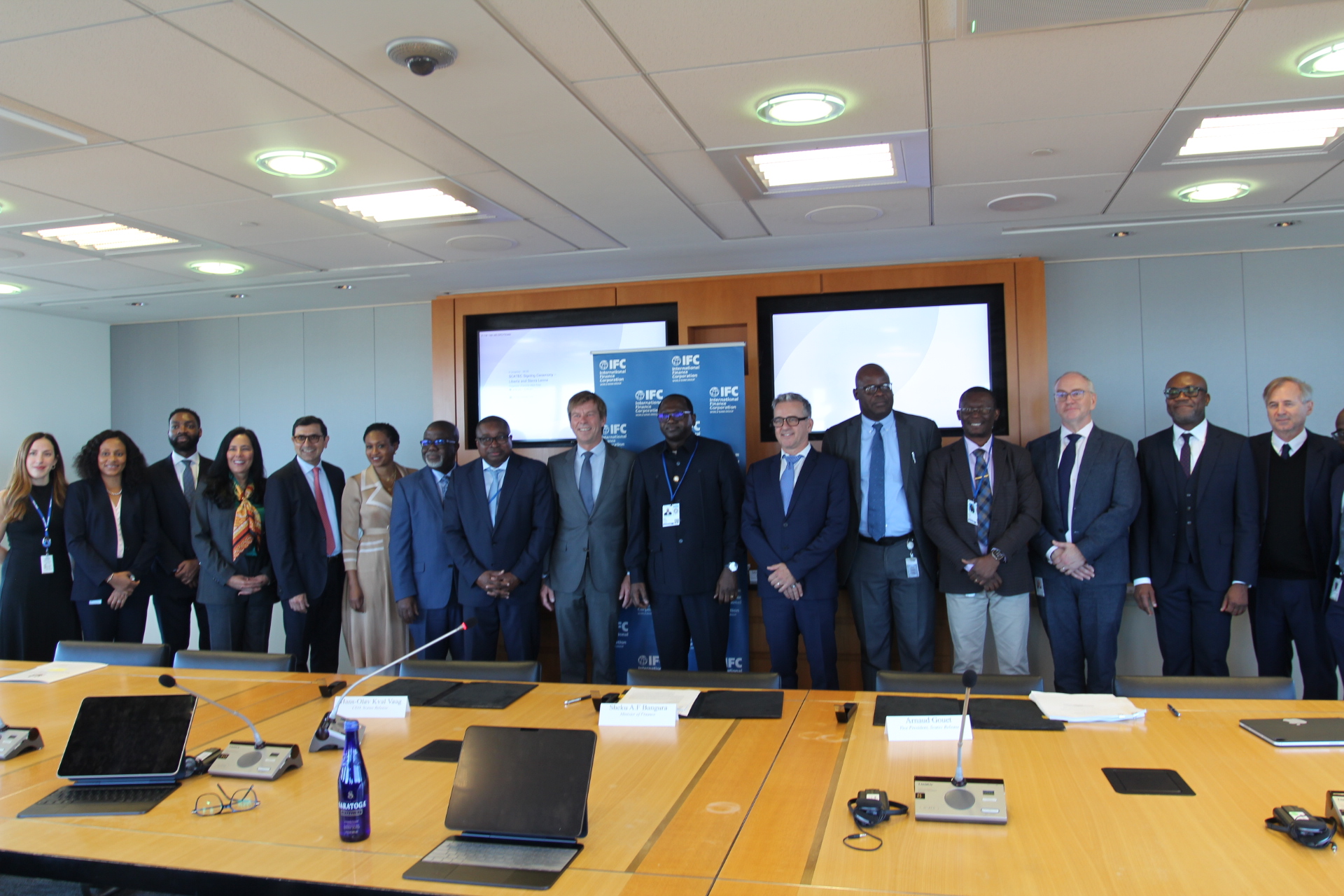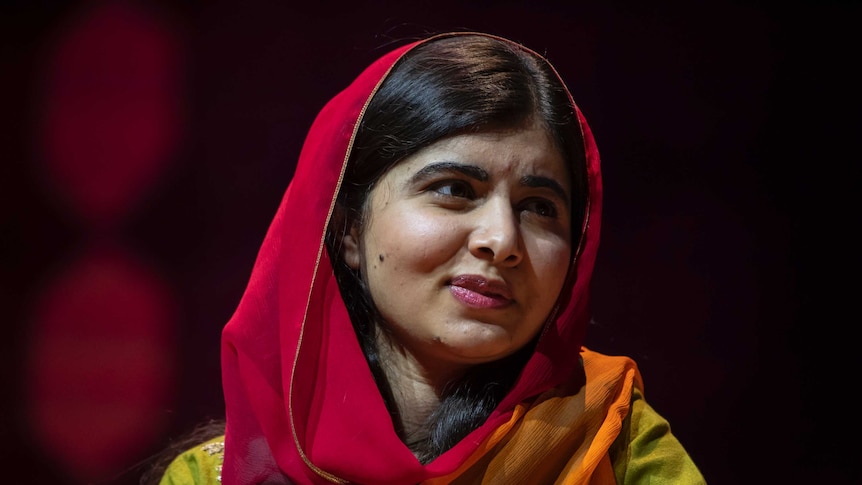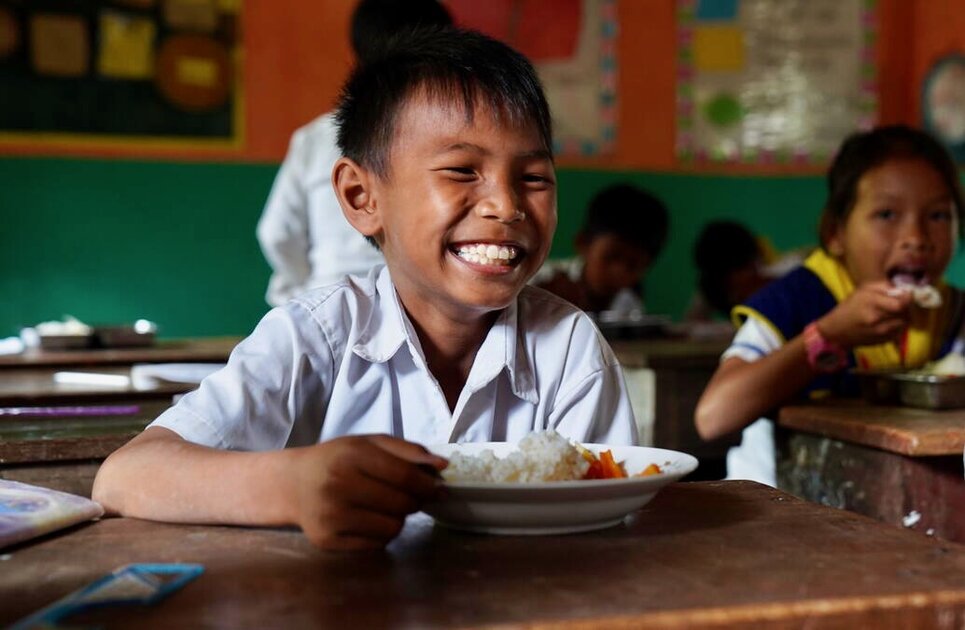It’s a story we all know well. Malala Yousefzai, the teenage girl shot by the Taliban, the youngest ever winner of the Nobel Peace Prize, a diligent student with an Oxford degree. But 13 years on she’s shaking off the narrative of…
Blog
-

What are SMRs? See what one of the first SMR facilities in the U.S. could look like
“One year ago, we set out with Amazon to reimagine the way in which we advance new energy projects in the United States, and how we power technologies like AI that are driving our economy forward,” said J. Clay Sell, chief executive officer of X-energy. “Over the past year, the support of Amazon has enabled us to accelerate progress on our technology, grow our team with world-class talent and expertise, and position the Cascade Advanced Energy Center at the forefront of energy innovation. The scale of this work is historic, and we are privileged to have world-class partners like Amazon and Energy Northwest in this effort.”
Continue Reading
-

1990s Nostalgia Is Still Driving Fashion, Music, Nightlife
In London, there’s a new bar called Bunga 90 themed on nostalgia, with an entrance through a mockup Blockbuster-esque video store and bands like the Cranberries blasting over the loudspeakers. This summer the Oasis reunion tour sold out…
Continue Reading
-

Clinical characteristics, cardiovascular damage, and platelet response
Introduction
Kawasaki disease (KD), an acute systemic vasculitis predominantly affecting children under 5 years,1,2 is the leading cause of acquired heart disease in developed nations.3–6 In countries such as China, Japan and the United…
Continue Reading
-
Study Challenges Need for Blood Thinners After CABG – Medscape
- Study Challenges Need for Blood Thinners After CABG Medscape
- Nearly Half of CABG Patients Have New-Onset AF, but It Often Doesn’t Last TCTMD.com
- Is Postoperative AF Changing Anticoagulation Decisions? Conexiant
- Postop Afib Scare Fades With…
Continue Reading
-

Release by Scatec secures additional lease agreements in Africa
Oslo/Washington DC, 16 October 2025: Release by Scatec, majority owned by Scatec ASA has signed new lease agreements totalling 64 MW of solar power and 10 MWh of battery storage across Liberia and Sierra Leone.
“These agreements mark a significant step in strengthening our renewable energy presence and delivering flexible, modular “lease-to-own” solutions to utilities in Sub-Saharan Africa. The projects are designed to replace expensive fossil fuel generation, improve grid reliability, and support local economic development,” says Scatec CEO and Chairman of Release, Terje Pilskog.
Release receives support from the World Bank’s IFC through a USD 100 million loan and a USD 65 million guarantee facility, established in 2023, securing payment obligations from Release’s clients. This partnership enables Release to offer affordable, clean power to African utilities with reduced financial risk, simplifying renewable energy adoption.
In Liberia, Release has entered into a 15-year lease agreement with the state-owned Liberia Electricity Corporation (LEC) for the development of a 24 MW solar plant combined with a 10 MWh battery energy storage system (BESS) in Duazon, near Monrovia. Release also secured a 40 MW solar project in Sierra Leone through a lease agreement with the national utility EGTC and the Ministry of Energy.
These two projects will be the first projects where Release will use its newly introduced solar panel mounting structure designed by its engineering team in South Africa, representing a milestone for the company and marking a start to a new way of delivering its projects.
Release is owned by Scatec (68%) and Climate Fund Managers (CFM) (32%) via its EU-supported Climate Investor One Fund, a USD 1 billion blended finance facility focused on renewable energy infrastructure in emerging markets.
For further information, please contact:
For analysts and investors:
Andreas Austrell, SVP IR
andreas.austrell@scatec.com
+47 974 38 686For media:
Meera Bhatia, SVP External Affairs & Communications
meera.bhatia@scatec.com
+47 468 44 959About Scatec
Scatec is a leading renewable energy solutions provider, accelerating access to reliable and affordable clean energy in emerging markets. As a long-term player, we develop, build, own, and operate renewable energy plants, with 6.2 GW in operation and under construction across five continents today. We are committed to growing our renewable energy capacity, delivered by our passionate employees and partners who are driven by a common vision of ‘Improving our Future’. Scatec is headquartered in Oslo, Norway and listed on the Oslo Stock Exchange under the ticker symbol ‘SCATC’. To learn more, visit www.scatec.com or connect with us on LinkedIn.About Release
Designed to overcome financial and technical barriers associated with adopting solar energy, Release is a flexible leasing agreement of pre-assembled solar PV and battery equipment to deliver a low cost, clean, and reliable power solution. About Release – Release by ScatecThis information is subject to the disclosure requirements pursuant to Section 5-12 the Norwegian Securities Trading Act
Continue Reading
-

Malala Yousefzai re-introduces herself in her new memoir ‘Finding My Way’
It’s a story you might think you know well. Malala Yousefzai, the teenage girl shot by the Taliban, the youngest ever winner of the Nobel Peace Prize, a diligent student with an Oxford degree, but 13 years on, she’s shaking off the narrative…
Continue Reading
-

The genetic association between prescription pain medication use and t
Introduction
Chronic pain can be categorized into nociceptive, neuropathic, and nociplastic pain.1 Fibromyalgia, also referred to as widespread musculoskeletal pain, is a typical type of nociplastic pain. People with fibromyalgia tend to have…
Continue Reading
-

The genetic association between prescription pain medication use and t
Introduction
Chronic pain can be categorized into nociceptive, neuropathic, and nociplastic pain.1 Fibromyalgia, also referred to as widespread musculoskeletal pain, is a typical type of nociplastic pain. People with fibromyalgia tend to have…
Continue Reading
-

Grains of change: Asia and the Pacific surge ahead on food fortification
Suryakali Vishwakarma says the fortified rice she’s rolling into balls helps her family stay healthy. Photo: WFP For Suryakali Vishwakarma, all rice is not created equal.
The pearly grains might look and taste the same. But the fortified rice, along with wheat, that she collects from a government village shop in northern India’s Uttar Pradesh State – both packed with essential vitamins and minerals – have become her go-to staples.
“Providing good nutrition to our children is no longer a problem,” says the young mother, after rolling a bowlful of fortified rice for cooking. “We feel healthy and fine with the consumption of nutritious, fortified rice.”
In India, and across Asia and the Pacific, fortified rice and wheat are transforming diets and futures for millions of the world’s poorest and hungriest people – thanks to government-led initiatives in partnership with the World Food Programme (WFP) and the Gates Foundation. Regional bodies, like the Association of Southeast Asian Nations, are also catalytic, by helping member states share lessons, align standards and pilot new models – so that progress in one country drives broader change.
Across Asia and the Pacific, fortified rice and wheat are transforming diets and futures. Photo: WFP “What connects all these efforts is strong government leadership, solid delivery systems and growing private sector engagement,” says Arvind Betigeri, WFP food fortification advisor for the Asia-Pacific region.
Packing up to eight essential nutrients, including iron, zinc, folic acid and vitamins A and B, the fortified grains amount to an inexpensive and powerful weapon in fighting malnutrition – in a region where poor diets leave one in three women anaemic, and nearly 80 million children stunted, or too short for their age.
Some of the most stunning results can be seen in India, the world’s most populous country, with high rates of anaemia and micronutrient deficiencies. More than half the population now has access to fortified food, especially staple rice, thanks to government leadership and WFP-supported pilots rolled out and expanded in some of the most vulnerable parts of the country.
Some of the most stunning results of fortification can be seen in India, the world’s most populous country, with high rates of anaemia and micronutrient deficiencies. Photo: WFP “Improving nutrition outcomes has a direct implication on improving the national productivity and economic output for the country,” says WFP food fortification policy officer Reema Sood. She cites findings showing that every US$1 invested in fortification delivers US$27 in returns, in terms of better cognitive development, increased economic productivity and reduced expenditure on treating diseases and anaemia.
Game changers
In populous states like Uttar Pradesh – where fortified rice reaches millions – the pilots are improving local production capacity and the quality of fortified food. They are also expanding public availability and acceptance, through cooking classes and awareness campaigns. For the most vulnerable, including pregnant and breastfeeding women and young children, fortified rice and wheat are available free of charge, as part of government safety net and school feeding programmes.
A young pupil in Cambodia enjoys his fortified rice that’s part of WFP-supported school meals. Photo: WFP/Darapech Chea “The fortified rice that is being provided is very beneficial for people’s health,” says mother Vishwakarma, who also credits her children’s strong marks to platefuls of fortified rice they receive at class.
“They are active throughout and their performance in school is also good,” she says of her two daughters. “They are the highest scorers in their school.“
In Sri Lanka – where many children suffer from a dearth of essential vitamins and minerals – WFP is collaborating with district governments to set up fortification facilities, which supply enriched rice to the national school meals programmes.
“This isn’t just a project, this is a game-changer for nutrition and education in Sri Lanka,” says Samir Wanmali, WFP Regional Director for Asia and the Pacific.
A school girl eats fortified food in Sri Lanka, where WFP is collaborating with district governments to set up fortification facilities. Photo: WFP In Bangladesh, where micronutrient deficiency, known as ‘hidden hunger,’ is also widespread, WFP is providing technical and other support to the Government’s food fortification programme, which targets women like Shikha Akhtar.
“Since I started eating fortified rice, I’ve been in better health,” says Akhtar, a Dhaka-based mother of two, who has struggled with illness. The 30kg of free Government-fortified rice is a welcome windfall for the family, which survives on her husband’s meagre wages as a daily labourer. “I encourage my neighbours in the village to eat this rice,” she says.
“Our main objective is to reach every woman’s doorstep across the country” with fortified rice, says Sharmin Shaheen, deputy director of Bangladesh’s Women’s Affairs Department.
Powering private partnerships
In Pakistan, WFP provides technical support and training to small-scale millers known as chakkis. Photo: WFP Along with governments, WFP is also working with the private sector to improve fortified food production across the region. A case in point is Pakistan, where WFP provides technical support and training to small-scale millers known as chakkis, to provide enriched wheat to local communities.
“These boost people’s health, helping to reduce malnutrition, especially for the elderly, women and children,” says one chakki owner, Rashid Nazir, who received WFP support for his business, located in a town outside the capital Islamabad.
The private sector is also key to scaling up food fortification in Nepal, one of the world’s poorest countries, where malnutrition among young children and mothers is high. In the remote, northwestern Karnali Province, WFP is supporting government efforts to make subsidized, fortified rice available to the poorest through social protection programmes, and in commercial markets.
In Nepal, WFP is supporting government efforts to make fortified rice available to the poorest, and companies to build their capacity. Photo: WFP That includes supporting companies to build their capacity, so Himalayan communities can better access the nutrient-packed grains in a region where food, especially nutritious food, is scarce.
“People travel three-to-five hours by foot to buy the rice,” says Raj Bahadur Rai, a company manager in the Himalayan district of Mugu. “The consumers of this fortified rice have been gradually increasing. They are slowly realizing its value.”
WFP’s rice fortification initiatives in the Asia-Pacific Region are supported by the Gates Foundation, DSM-Firmenich, the Korea International Cooperation Agency (KOICA) and the UN-India Partnership Fund.
Learn more about WFP’s work in Bangladesh, India, Nepal, Pakistan and Sri Lanka
Continue Reading
